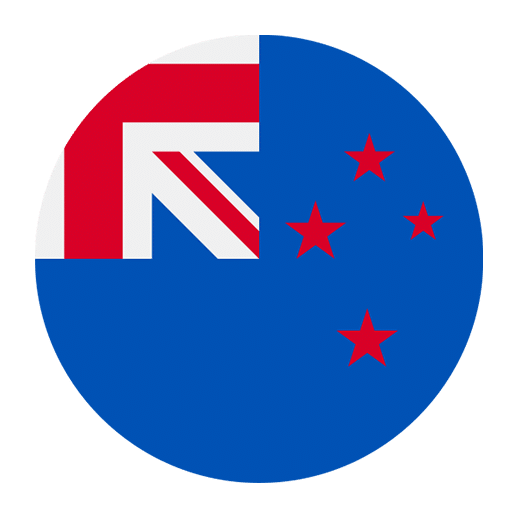New Zealand, also known as Aotearoa in Māori, is a country rich in cultural heritage and traditions. One of the most integral parts of Māori culture is its music, particularly traditional songs known as waiata. Waiata are far more than just songs; they are a means of storytelling, historical record-keeping, and cultural expression. By learning about waiata, one can gain a deeper understanding of Māori customs, values, and history. This article aims to explore the significance of waiata and delve into the meanings behind some of these traditional songs.
What Are Waiata?
Waiata are traditional Māori songs that encompass a wide range of themes, including love, lament, celebration, and spiritual devotion. They are often performed during important ceremonies, celebrations, and rituals, serving as both entertainment and a means of preserving oral history. Waiata can be performed solo or in groups and are usually accompanied by traditional Māori musical instruments such as the pūtātara (conch shell trumpet) and the pākuru (slapstick).
Types of Waiata
Waiata Tangi: These are laments, often composed to mourn the loss of a loved one. They express deep sorrow and are sung at funerals and other mourning ceremonies.
Waiata Aroha: These are love songs that express affection, longing, and admiration. They can be sung to a romantic partner, family member, or even a cherished place.
Waiata Whaiaaipo: These are songs of courtship and flirtation, often playful and filled with romantic innuendos.
Waiata Whakapapa: These songs serve to recount genealogies and tribal histories. They are vital for passing down knowledge of one’s ancestry and heritage.
Waiata Koroua: These are ancient songs that have been passed down through generations. They often carry significant historical and cultural information.
The Role of Waiata in Māori Culture
Waiata play a crucial role in maintaining the cultural fabric of Māori society. They serve as a repository of knowledge, preserving stories, traditions, and histories that might otherwise be lost. Waiata are also a means of reinforcing social bonds and communal identity. During gatherings, the communal singing of waiata fosters a sense of unity and belonging.
Waiata in Ceremonies
Waiata are an essential part of various Māori ceremonies such as pōwhiri (welcoming ceremonies), tangihanga (funeral rites), and weddings. During a pōwhiri, for instance, waiata are performed to welcome guests and to pay homage to the ancestors. In tangihanga, waiata tangi are sung to express grief and to honor the deceased.
Educational Value
Waiata are also used as educational tools. They teach younger generations about their history, language, and cultural values. Through the lyrics of these songs, children learn about the deeds of their ancestors, the significance of their land, and the moral principles that guide their community.
Understanding the Meanings Behind Waiata
To truly appreciate waiata, it is essential to understand the meanings behind the lyrics. Many waiata are imbued with metaphor, symbolism, and historical references that may not be immediately apparent to the uninitiated. Let’s explore some well-known waiata and their meanings.
Pōkarekare Ana
One of the most famous Māori love songs, “Pōkarekare Ana,” is often performed both in New Zealand and internationally. The song tells the story of a man who is separated from his beloved and expresses his longing and devotion. The lyrics are simple yet poignant, capturing the universal theme of love and yearning.
Lyrics:
Pōkarekare ana, ngā wai o Rotorua
Whiti atu koe hine, marino ana e
Translation:
The waters of Rotorua are agitated
If you cross over, girl, they will be calm again
The song uses the imagery of turbulent waters to symbolize the emotional turmoil of separation. The man’s hope is that his beloved’s return will bring peace and calm, just as her presence would still the waters.
E Hine Hoki Mai
“E Hine Hoki Mai” is another beautiful waiata that speaks of longing and the desire for reunion. The song is often sung as a lullaby, soothing listeners with its gentle melody and heartfelt lyrics.
Lyrics:
E hine hoki mai
E te tau, e taku rau
Translation:
Oh girl, come back
Oh my beloved, my precious one
The repetition of the plea for the girl’s return underscores the depth of the singer’s longing and affection. The term “taku rau” (my precious one) highlights the cherished nature of the relationship.
Tūtira Mai Ngā Iwi
“Tūtira Mai Ngā Iwi” is a well-known waiata that promotes unity and togetherness. It is often sung at gatherings and events to encourage collective action and solidarity.
Lyrics:
Tūtira mai ngā iwi
Tātou tātou e
Translation:
Line up together, people
All of us, all of us together
The song’s message is clear and direct, calling for people to come together and work as one. The repetition of “tātou tātou e” emphasizes the importance of unity and collective effort.
The Musical Elements of Waiata
Waiata are not just about the lyrics; the musical elements also play a vital role in conveying the song’s message and emotion. Traditional Māori music often features a unique blend of vocal techniques, harmonies, and rhythmic patterns.
Vocal Techniques
Māori singers employ various vocal techniques to enhance the emotional impact of waiata. One such technique is “poi,” where the singer uses a rhythmic swinging of poi (light balls attached to flax strings) to create a mesmerizing visual and auditory effect. Another technique is “haka,” which involves vigorous chanting and body movements to convey strength and passion.
Harmonies
Harmonies in waiata are typically rich and layered, with different vocal parts coming together to create a harmonious whole. The use of harmonies adds depth and complexity to the music, making it more engaging and emotionally resonant.
Rhythmic Patterns
The rhythmic patterns in waiata can vary widely, from slow and contemplative to fast and energetic. Traditional Māori instruments such as the pūtātara and pākuru often provide the rhythmic foundation, complementing the vocal melodies and adding to the overall texture of the music.
Learning and Performing Waiata
For those interested in learning and performing waiata, it is essential to approach the process with respect and cultural sensitivity. Waiata are not just songs; they are an integral part of Māori heritage and should be treated as such.
Respecting the Tradition
When learning waiata, it is crucial to respect the tradition and the people from whom the songs originate. This means seeking permission when necessary, understanding the cultural context, and being mindful of the significance of the lyrics and melodies.
Resources for Learning Waiata
There are many resources available for those interested in learning waiata. These include:
Community Classes: Many Māori communities offer classes where individuals can learn waiata from experienced singers and cultural practitioners.
Online Resources: Websites, YouTube channels, and online courses provide valuable information and tutorials on waiata.
Books and Recordings: Books and recordings by knowledgeable authors and musicians can be excellent resources for learning the lyrics, melodies, and meanings of waiata.
Practicing and Performing
Practice is essential when learning waiata. Regular practice helps to internalize the lyrics and melodies, making it easier to perform with confidence and authenticity. Performing waiata, whether in a community setting or as part of a cultural event, can be a deeply rewarding experience that fosters a greater connection to Māori culture.
The Future of Waiata
As with many traditional art forms, waiata face challenges in the modern world. However, there is also a growing interest in preserving and revitalizing this important aspect of Māori culture.
Challenges
One of the main challenges facing waiata is the potential loss of knowledge as older generations pass away. Additionally, the influence of Western music and culture can sometimes overshadow traditional Māori music, leading to a decline in its practice and appreciation.
Revitalization Efforts
Despite these challenges, there are many efforts underway to revitalize waiata. Māori communities, cultural organizations, and educational institutions are working to preserve and promote traditional songs. Initiatives such as Māori Language Week and various cultural festivals provide platforms for the performance and celebration of waiata.
The Role of Technology
Technology also plays a significant role in the preservation and dissemination of waiata. Online platforms, digital recordings, and social media provide new avenues for sharing and promoting traditional Māori music. These tools make it easier for people around the world to access and appreciate waiata.
Conclusion
Traditional Māori songs, or waiata, are a vital part of New Zealand’s cultural heritage. They serve as a means of storytelling, historical record-keeping, and cultural expression. By understanding the meanings behind waiata and appreciating their musical elements, one can gain a deeper insight into Māori culture and values. Whether through learning, performing, or simply listening, engaging with waiata is a meaningful way to connect with the rich traditions of the Māori people. As efforts to preserve and revitalize waiata continue, these beautiful songs will undoubtedly remain a cherished part of New Zealand’s cultural landscape for generations to come.

